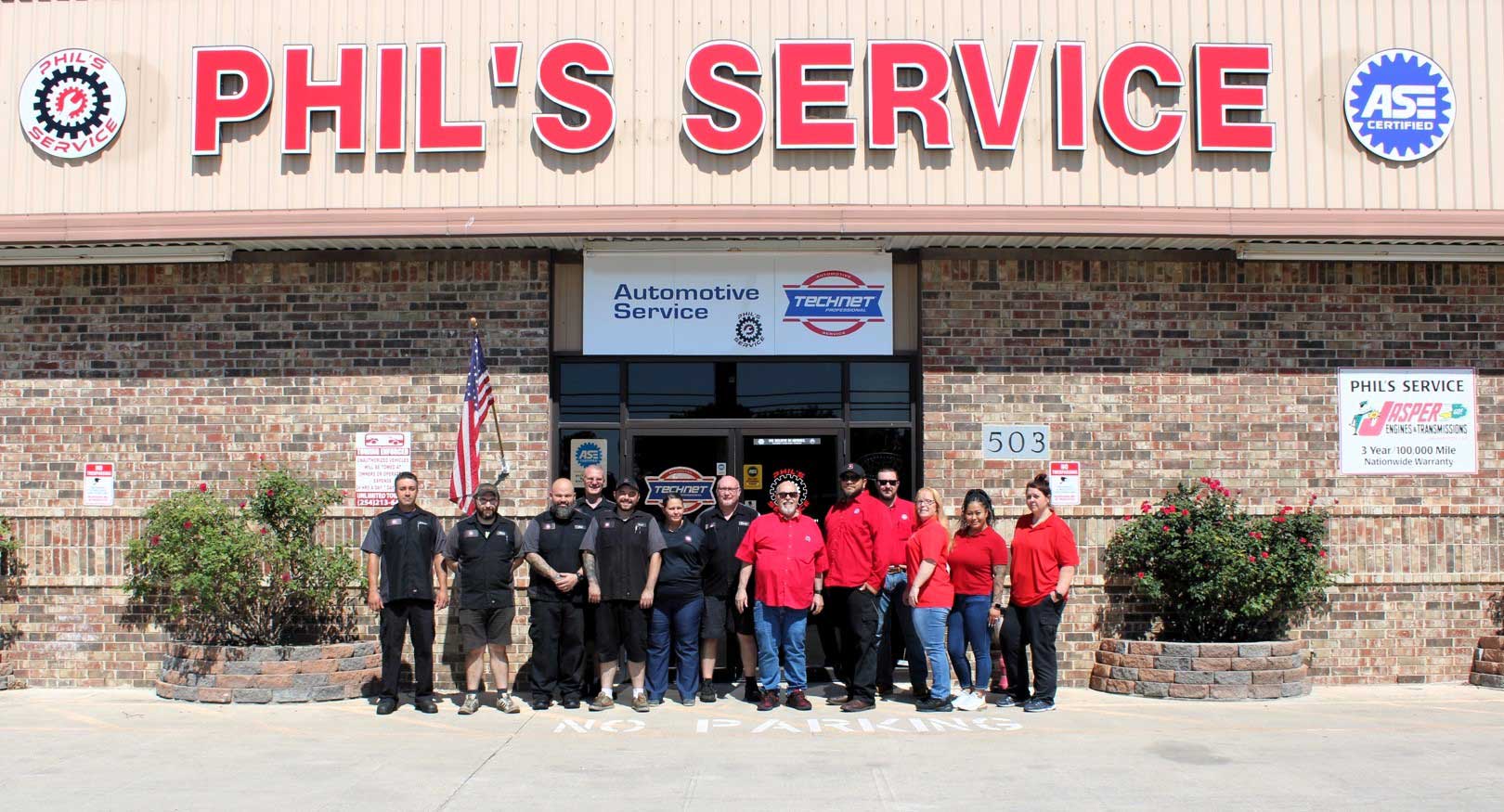Car accidents can be devastating, and while few of them are caused by faulty parts, about 22% of those are down to the brakes.
They're perhaps the most important safety component of a car, and if your brakes fail while you're driving, your life and the lives of others on the road could be at risk. This is more important to consider when you're planning a long drive. Checking your car beforehand is always ideal.
Due to the importance of the brakes, you should always make sure they're working correctly before heading out on a road trip. In this guide, we'll explain how to check your brake pads to help you stay safe on the road. Keep reading for more.
Signs of Worn-Out Brake Pads
It's important to understand that your brakes wear down with time, and at any point, you might need to replace them. There are certain signs you can keep an eye out for while driving as you may realize you need to replace your brake pads before you inspect them.
Screeching Noises
This is one of the most common signs that brake pads are worn. They often start to make a high-pitched screeching or squealing noise when applying pressure to the brake pedal.
This is because as the brake pad gets thin, it will start making contact with the brake rotor. This is one of the most noticeable indicators that there's an issue.
Grinding Sounds
If your brake pads wear down even further, they may reach a point where the metal backing itself is making contact with the brake rotor. This is more severe and presents a major safety issue. If your brakes seem to make any kind of grinding sound, you'll want to attend to them immediately.
Poor Brake Performance
Fresh brakes will always perform better than worn ones. If yours don't seem to be as effective as they once were, it's probably due to wear and tear.
The lack of friction material means the pads won't grip as well. It could also cause increased pedal travel, resulting in your brakes feeling less responsive overall.
Vibrations or Pulsations
Another sign of worn brakes is vibrations or pulsations. If you experience these when braking, it's probably because your brake pads are worn unevenly.
This may also happen if your brake rotors are warped. You should get a professional to take a look to determine the exact issue.
How to Check Your Brake Pads?
While worn brakes are never ideal, the good thing here is that they're easier to inspect than many other car parts.
There are several ways you can check your brakes to figure out if there are any other issues.
While Driving
While you're driving you can look for any of the signs above. If you notice any unusual sounds or vibrations when applying your brakes, then there's probably something wrong.
Pay attention to their performance too so you can be certain. Try emergency braking to make sure your car is stopping as quickly as it should.
Bear in mind that any noises your brakes make are likely to get louder the more you use them. Additionally, if your car detects that you're low on brake fluid, the warning light on the dashboard will turn on.
Without Removing the Wheels
You can perform a visual brake pad inspection to see what condition they're in. For a quick check, you won't even need to remove the wheels.
Brake dust tends to accumulate with normal wear. However, if your brakes aren't functioning properly, this may change. As such, your wheels might be cleaner or dirtier than usual.
On most cars, the brake pads are quite clearly visible. This means you can check for brake wear signs with ease.
Take a look at the brake pad thickness. If it seems very thin, then they're probably too worn down and may need to be replaced. Some brake pads have a wear indicator in the center, so if this slot is almost gone, then your brake pads are worn and are due for replacement.
Removing the Wheels
If you want to be more thorough with your road trip car checks, you'll probably want to get a better look at your brakes. Removing the wheels will make it much easier to assess the condition of your brakes.
Wedge the wheels, loosen the lug nuts, raise your car using a jack, and remove the lug nuts and wheel. You'll now be able to inspect your brakes more closely to determine if there are any issues. If you haven't removed a wheel before, you may want to get some assistance with this as it can potentially be dangerous when things aren't done correctly.
When to Replace Your Brake Pads?
Brake pads can wear at varying rates, so there's no set time frame or driving distance that dictates when you should change them. In an urban setting, they often last between 30,000 to 35,000 miles, but if you drive mostly on highways, they can last more than twice as long. The brand/model and how you drive will also play a part.
Because of this, it's important to understand the signs above and look out for them when driving. This is the best way to know if your brake pads are nearing the end of their useful life.
Bear in mind that newer brakes will typically be in a good state for a while. It's more important to watch for these indicators when you've had the same brake pads for a while. If you're going on a long road trip, and your brake pads haven't been replaced recently, you should always check them properly before you begin your journey.
Replacing Your Brake Pads
Now that you know how to check your brake pads, you'll be able to determine when you should have them replaced. If you've reached that point, you should ensure the work is done by a qualified professional.
Phil's Service is a leading auto repair shop based in Killeen, TX, and is the only ASE Blue Seal Certified repair shop in the city. Take a look at our service page for more details about everything we can do.
Wondering How to check brake pads before a long road trip from harker heights, tx? Call the auto experts at Phil's Service to schedule an brake Rotors.
Car accidents can be devastating, and while few of them are caused by faulty parts, about 22% of those are down to the brakes.
They're perhaps the most important safety component of a car, and if your brakes fail while you're driving, your life and the lives of others on the road could be at risk. This is more important to consider when you're planning a long drive. Checking your car beforehand is always ideal.
Due to the importance of the brakes, you should always make sure they're working correctly before heading out on a road trip. In this guide, we'll explain how to check your brake pads to help you stay safe on the road. Keep reading for more.
Signs of Worn-Out Brake Pads
It's important to understand that your brakes wear down with time, and at any point, you might need to replace them. There are certain signs you can keep an eye out for while driving as you may realize you need to replace your brake pads before you inspect them.
Screeching Noises
This is one of the most common signs that brake pads are worn. They often start to make a high-pitched screeching or squealing noise when applying pressure to the brake pedal.
This is because as the brake pad gets thin, it will start making contact with the brake rotor. This is one of the most noticeable indicators that there's an issue.
Grinding Sounds
If your brake pads wear down even further, they may reach a point where the metal backing itself is making contact with the brake rotor. This is more severe and presents a major safety issue. If your brakes seem to make any kind of grinding sound, you'll want to attend to them immediately.
Poor Brake Performance
Fresh brakes will always perform better than worn ones. If yours don't seem to be as effective as they once were, it's probably due to wear and tear.
The lack of friction material means the pads won't grip as well. It could also cause increased pedal travel, resulting in your brakes feeling less responsive overall.
Vibrations or Pulsations
Another sign of worn brakes is vibrations or pulsations. If you experience these when braking, it's probably because your brake pads are worn unevenly.
This may also happen if your brake rotors are warped. You should get a professional to take a look to determine the exact issue.
How to Check Your Brake Pads?
While worn brakes are never ideal, the good thing here is that they're easier to inspect than many other car parts.
There are several ways you can check your brakes to figure out if there are any other issues.
While Driving
While you're driving you can look for any of the signs above. If you notice any unusual sounds or vibrations when applying your brakes, then there's probably something wrong.
Pay attention to their performance too so you can be certain. Try emergency braking to make sure your car is stopping as quickly as it should.
Bear in mind that any noises your brakes make are likely to get louder the more you use them. Additionally, if your car detects that you're low on brake fluid, the warning light on the dashboard will turn on.
Without Removing the Wheels
You can perform a visual brake pad inspection to see what condition they're in. For a quick check, you won't even need to remove the wheels.
Brake dust tends to accumulate with normal wear. However, if your brakes aren't functioning properly, this may change. As such, your wheels might be cleaner or dirtier than usual.
On most cars, the brake pads are quite clearly visible. This means you can check for brake wear signs with ease.
Take a look at the brake pad thickness. If it seems very thin, then they're probably too worn down and may need to be replaced. Some brake pads have a wear indicator in the center, so if this slot is almost gone, then your brake pads are worn and are due for replacement.
Removing the Wheels
If you want to be more thorough with your road trip car checks, you'll probably want to get a better look at your brakes. Removing the wheels will make it much easier to assess the condition of your brakes.
Wedge the wheels, loosen the lug nuts, raise your car using a jack, and remove the lug nuts and wheel. You'll now be able to inspect your brakes more closely to determine if there are any issues. If you haven't removed a wheel before, you may want to get some assistance with this as it can potentially be dangerous when things aren't done correctly.
When to Replace Your Brake Pads?
Brake pads can wear at varying rates, so there's no set time frame or driving distance that dictates when you should change them. In an urban setting, they often last between 30,000 to 35,000 miles, but if you drive mostly on highways, they can last more than twice as long. The brand/model and how you drive will also play a part.
Because of this, it's important to understand the signs above and look out for them when driving. This is the best way to know if your brake pads are nearing the end of their useful life.
Bear in mind that newer brakes will typically be in a good state for a while. It's more important to watch for these indicators when you've had the same brake pads for a while. If you're going on a long road trip, and your brake pads haven't been replaced recently, you should always check them properly before you begin your journey.
Replacing Your Brake Pads
Now that you know how to check your brake pads, you'll be able to determine when you should have them replaced. If you've reached that point, you should ensure the work is done by a qualified professional.
Phil's Service is a leading auto repair shop based in Killeen, TX, and is the only ASE Blue Seal Certified repair shop in the city. Take a look at our service page for more details about everything we can do.


